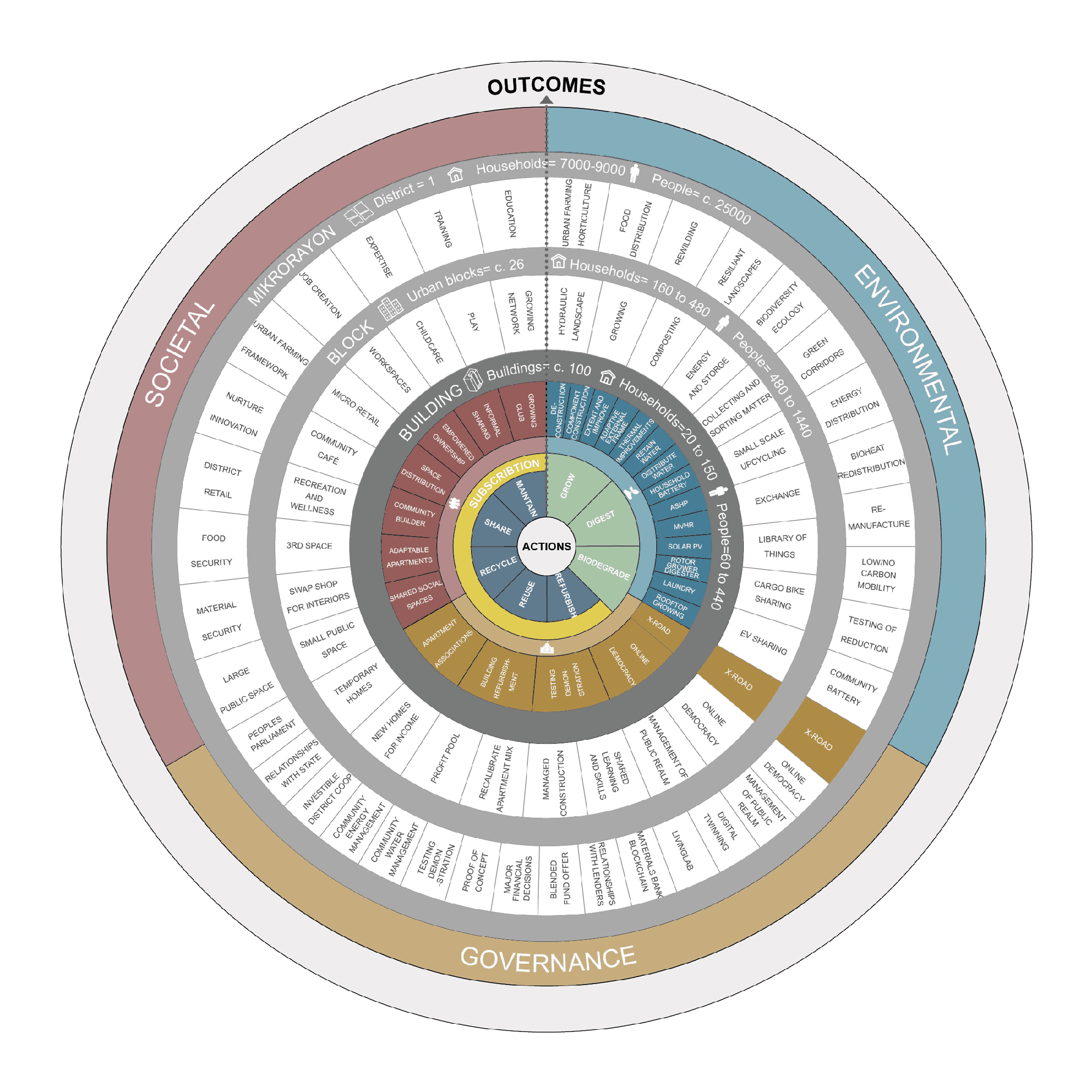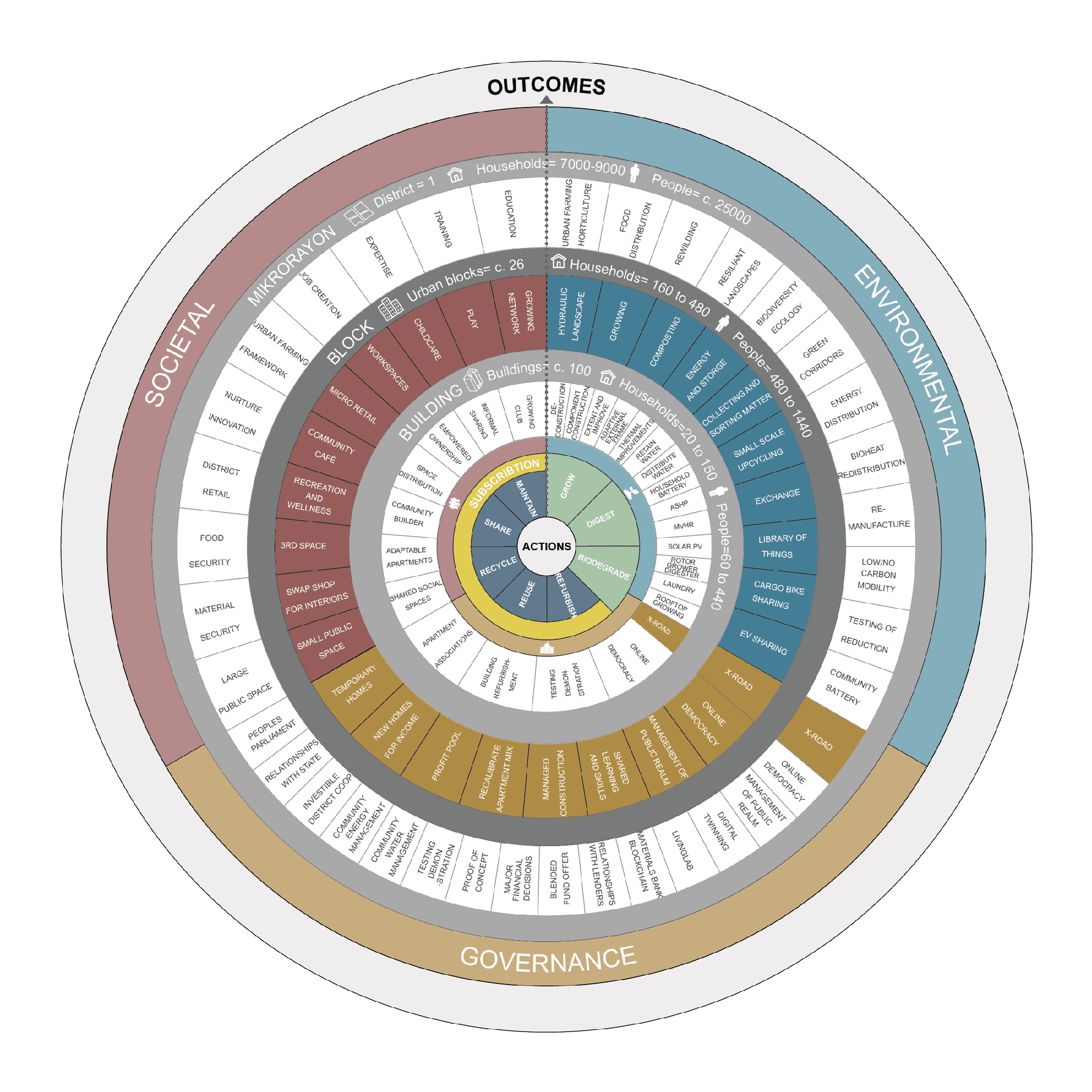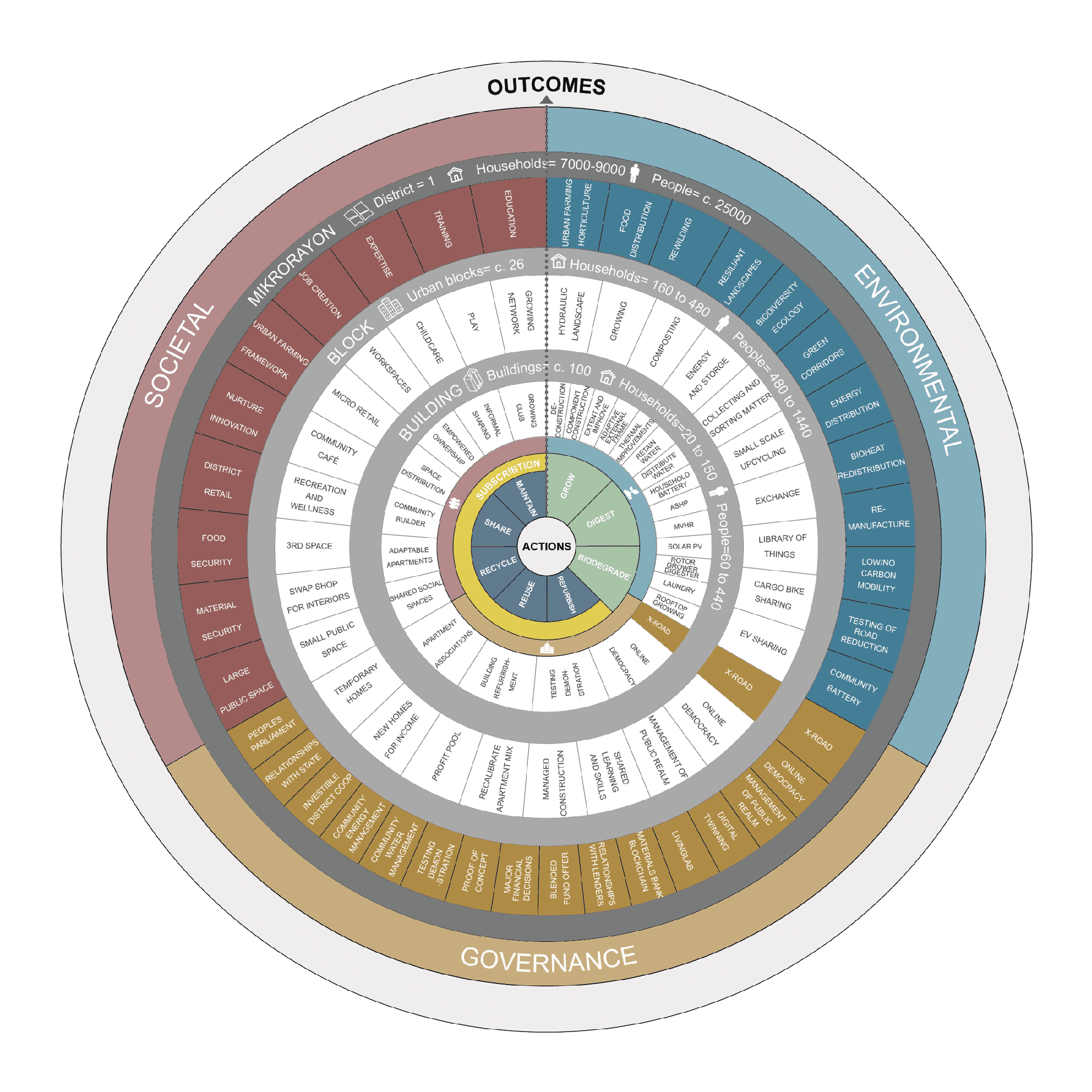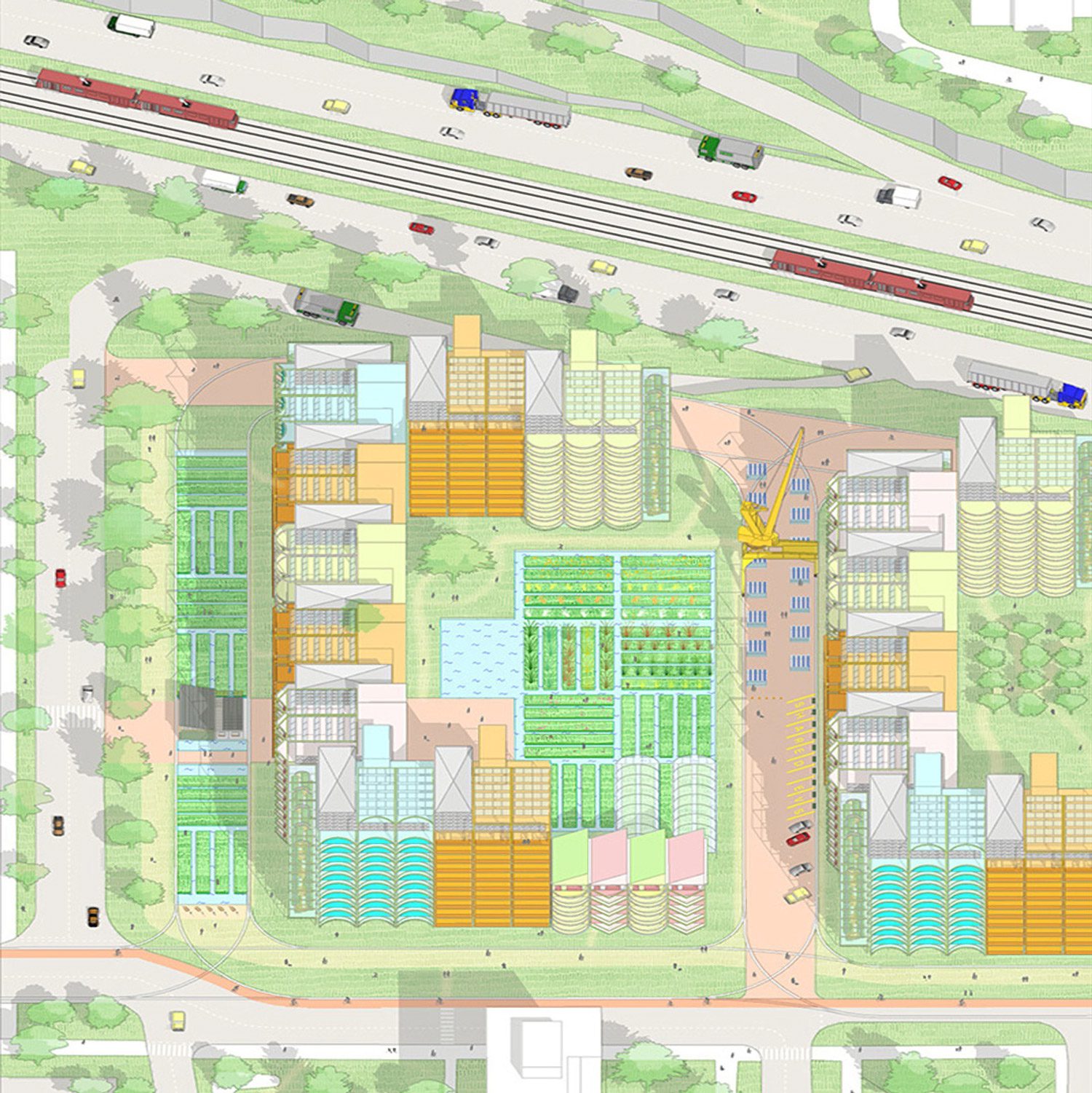
Unfinished City
A collaborative entry for the 2022 Tallinn Architecture Biennale’s ideas competition imagining a circular future for the soviet-built district of Lasnamäe. In partnership with Londonon.
Tallinn: Reinventing the Mikrorayon
Issued as part of the the 2022 Tallinn Architecture Beinnale, the Circular Block: Reinventing the Mikrorayan competition sought to explore architecture’s expressive capacity to convert waste to energy or matter via circular operations from the micro to the macro scale. Through the design of an urban unit that operates as a circular system in its resources and economy protocols, as well as in the cycling of its materials, the aim of the competition was to define new productive and socially cohesive urban models that question the traditional linear and discrete consumption and production systems in cities.
The Brief
“In Estonia, buildings are responsible for around half of the nation’s energy consumption and about a quarter of the country’s carbon footprint. With comparable numbers in the built environment in different geographic regions, architecture’s response to the climate emergency through alternative design, construction and operational models is critical. How can microbial fuel units, anaerobic digesters, bacteria tanks, green cultivations, algae units and other building elements be retrofitted to existing housing units and the building block as a whole, so as not only function as engineering infrastructure, but also as inhabitable space? What are the aesthetic questions of infrastructure and how can such questions be instrumentalized to foster a creative design process?
Operating at three distinct scales, the Circular Block competition invited participants to consider Tallinn’s Lasnamäe district as a territory to investigate design strategies that allow urban blocks to produce food for its inhabitants, generate required energy partially off the grid, use waste for generating energy or products, increase urban density using demolition waste, or implement blockchain technology for locally managing energy or material resources, among other possibilities.”
Our Response

Unfinished City
Our proposal considers all scales (Building, Block and District) and all four topics (Food, Energy, Waste, Matter) and forms part of a wider vision for a circular district, driven by empowered residents through adaptable structures of highly participatory governance and decision-making.
We imagine a digitally-enabled ‘People’s Parliament’, with strong social connections fostered in the physical pursuit of growing, sharing and reusing in a productive hydraulic landscape and shared spaces made from repurposed materials and redundant building components.
Engagement with decision making on all scales, opportunities for training and career-making in critical high-skilled sectors, and the shared experience of quickly manifested results, galvanise the community around common circular principles.
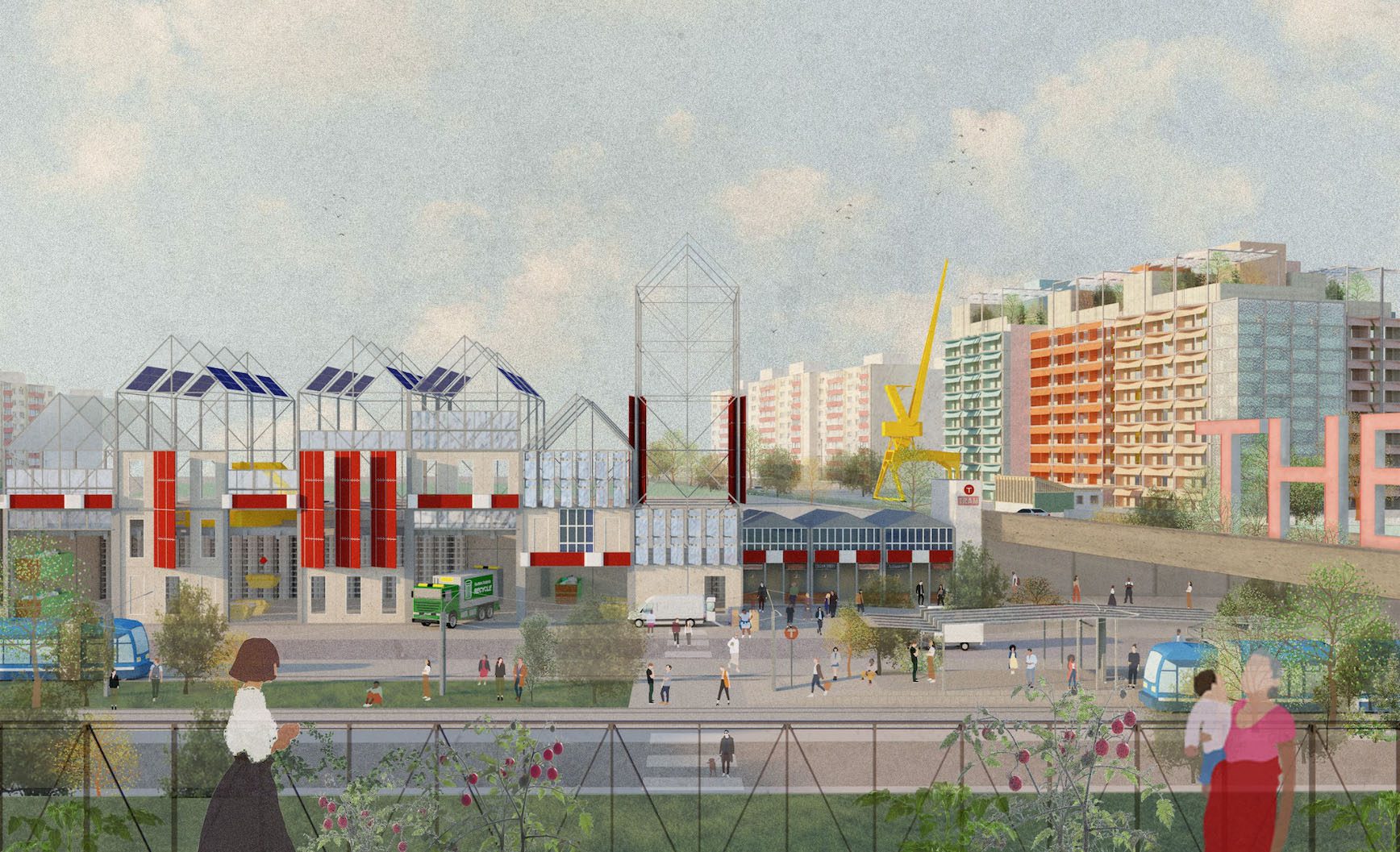
The gradual expansion of activity and development of a district centre composed of civic structures, largely constructed from material gathered from refurbishment works, which evolve in scale as the momentum of regeneration increases, and which support the future of the district.
Ultimately, the district, forever ‘unfinished’, sustains its own continual renewal and inspires and offers support to a wider movement of kindred projects. Visibility, resources and facilities grow in step with gathering and training a workforce, growing resident participation, proof of concept and the subsequent de-risking likely to required for external funding. We imagine that the joinery to “regenerative” will look something like this over a period of time.

1. Marker. Initial markers establish the project in the public consciousness, invite intrigue and provide places for meeting, testing and demonstration.

2. Prototype. The first building is refurbished to improve performance and flexibility. Materials removed from the building are catalogued and retained for reuse or remanufacture.

3. Reuse. Materials removed from disassembled residential facades, fixed to the skin of an adaptable structure extended from the initial marker, form a LivingLab which supports the expansion of refurbishment works. The LivingLab provides larger spaces for administration and training. Facilities for the storage and processing of materials during the middle phases of the project are also provided, as well as making connections with the passing city.

4. Production & Connection . Spaces between buildings are used for urban farming, connecting a food network centred, logistically and socially, on a larger central growing and distribution facility. ‘People’s Parliament’ buildings within the urban blocks connect organising at different scales. New transit provides more inclusive access to Laagna, and interest in the the very evident change increases and attracts further engagement.

5. Integrated Model. Larger scale ‘Re-Manufactory’ facilities are housed in a redundant industrial building rescued from elsewhere, completing the civic assembly at the heart of the district.

6. Future Framework. The district centre supports refurbishment and improvement works throughout Laagna and remains vital in allowing for future circular renewal. Varied networks extend from the district allowing the flow of people, skills and ideas beyond.
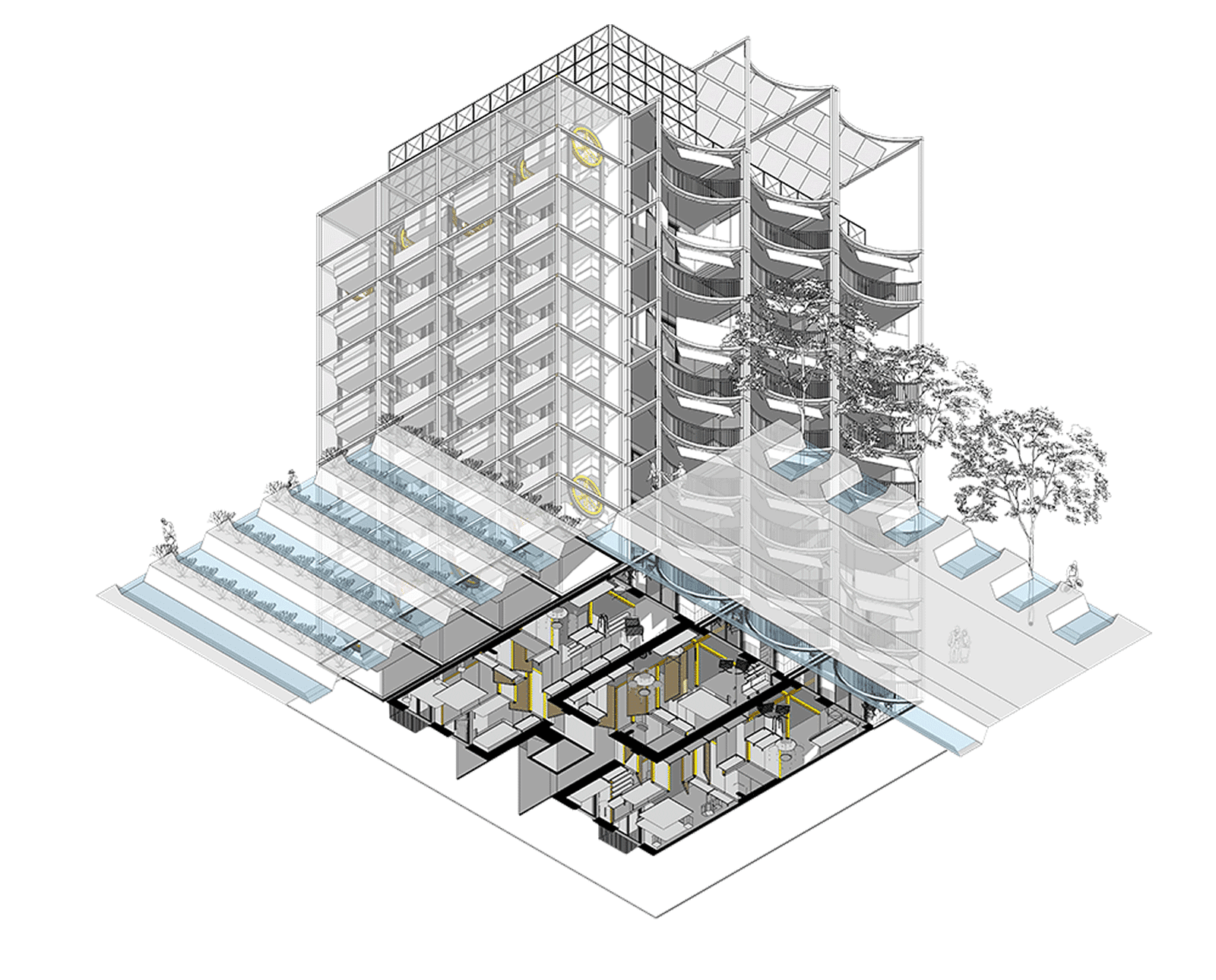
The Building Scale
The existing arrangement of buildings into urban blocks is retained, but the spaces in between enriched and activated to become a focus for social and civic participation in the life of the block. New modest multifunctional ‘People’s Parliament’ buildings, constructed from reclaimed concrete panels and sustainable timber, provide interior spaces for the democratic and civic activity which brings the community together at this scale, but also provide for a variety of shared ‘day to day’ requirements.
Additional housing, constructed from the same recyclable components utilised in the modernisation of the existing residential buildings, addresses central social spaces, allowing residents temporarily displaced by refurbishment works to stay within their immediate communities and ultimately, new residents to integrate into the heart of the block.
The Block Scale
The existing arrangement of buildings into urban blocks is retained, but the spaces in between enriched and activated to become a focus for social and civic participation in the life of the block. New modest multifunctional ‘People’s Parliament’ buildings, constructed from reclaimed concrete panels and sustainable timber, provide interior spaces for the democratic and civic activity which brings the community together at this scale, but also provide for a variety of shared ‘day to day’ requirements.
Additional housing, constructed from the same recyclable components utilised in the modernisation of the existing residential buildings, addresses central social spaces, allowing residents temporarily displaced by refurbishment works to stay within their immediate communities and ultimately, new residents to integrate into the heart of the block.
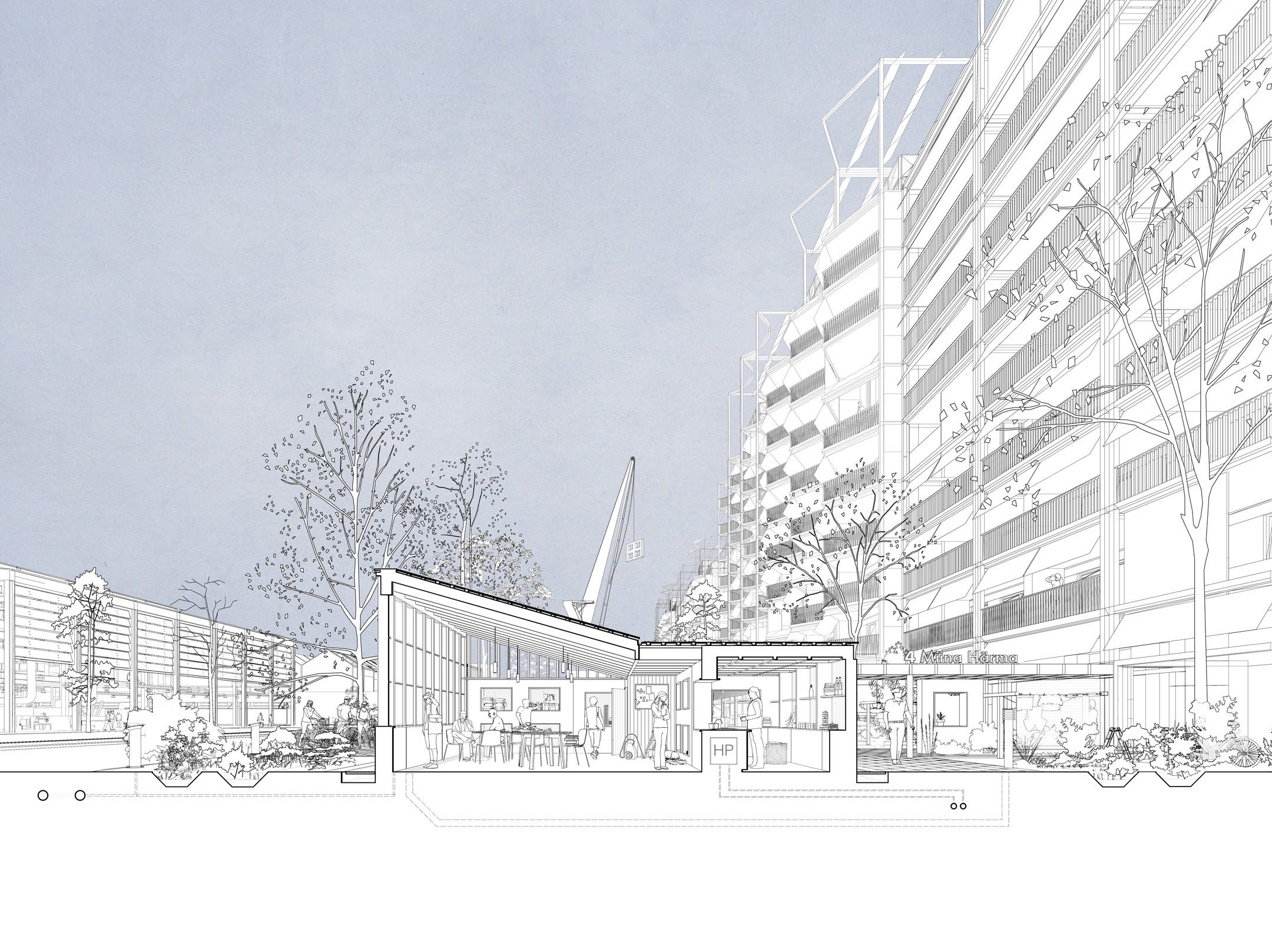
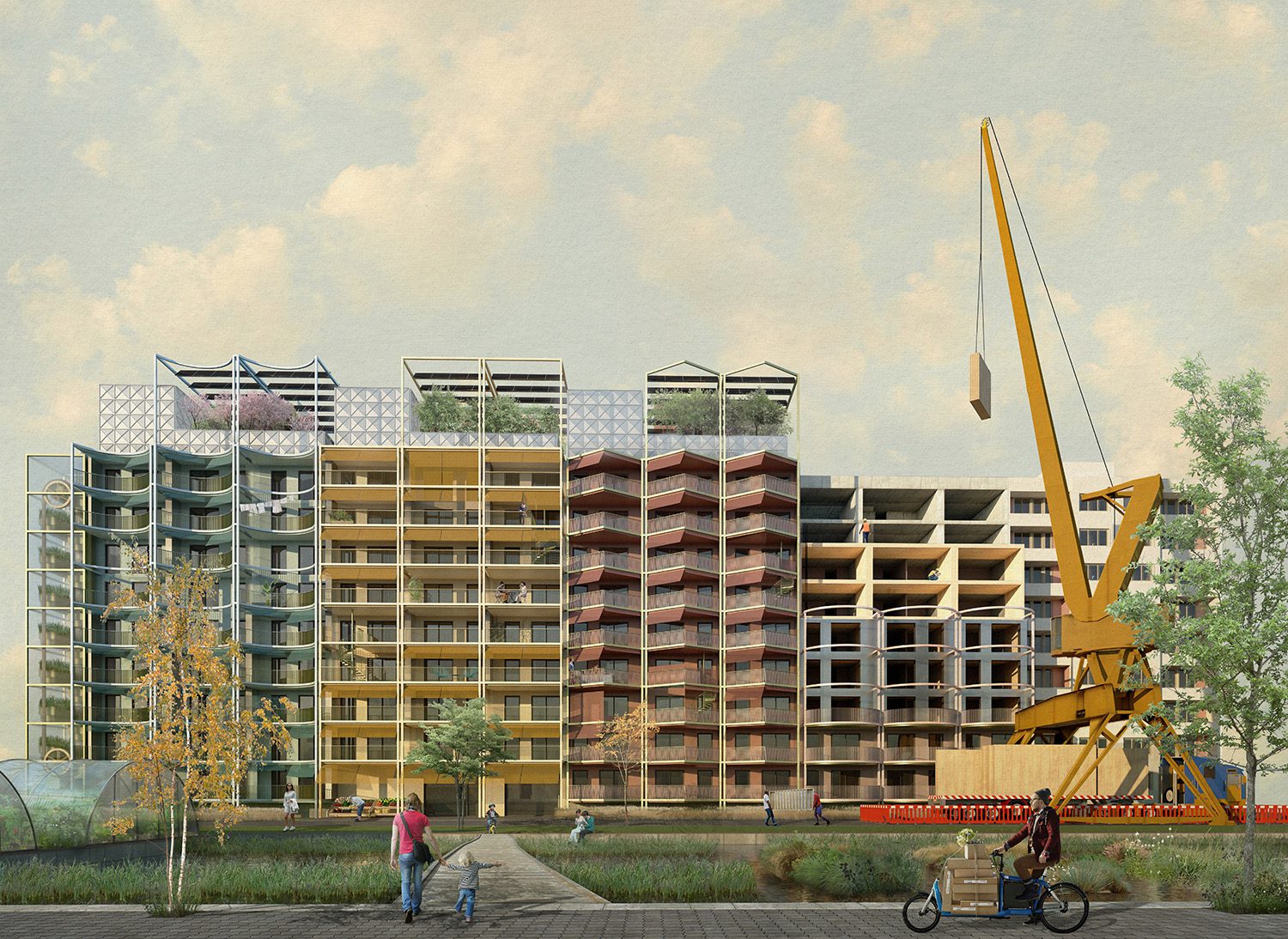
The District Scale
At the civic heart of Laagna, we propose a Re-Manufactory, composed of repurposed industrial buildings from elsewhere, where materials removed from existing buildings and biomatter from the landscape are processed and stored. Adjacent, an urban farm and food market grows and distributes food and provides a strong social focus for the district.
At the roadside and adjacent to new transit, a multipurpose facility, assembled from a lightweight frame and redundant building components, begins life as a gathering of small highly visible interventions– a micro-civic belvedere, super-graphic treatment of the bridges, events and community projects in the wasted space of the cutting – but grows to contain administrative functions associated with the circular project – establishing an outward civic identity and interfacing with the passing city to exchange ideas and materials beyond the district.
Links to pdfs of our entries: Building, Block, District.
Awarded an Honorable Mention
Click here to visit the competition website
Team: Neighbourhood, Haptic Architects, Morris+Company, Mae, Gort Scott, Coffey Architects, Elliot Wood, Skelly & Couch
Image credits: Haptic Architects, Moa Wintzell, Mae Architects, Gort Scott
